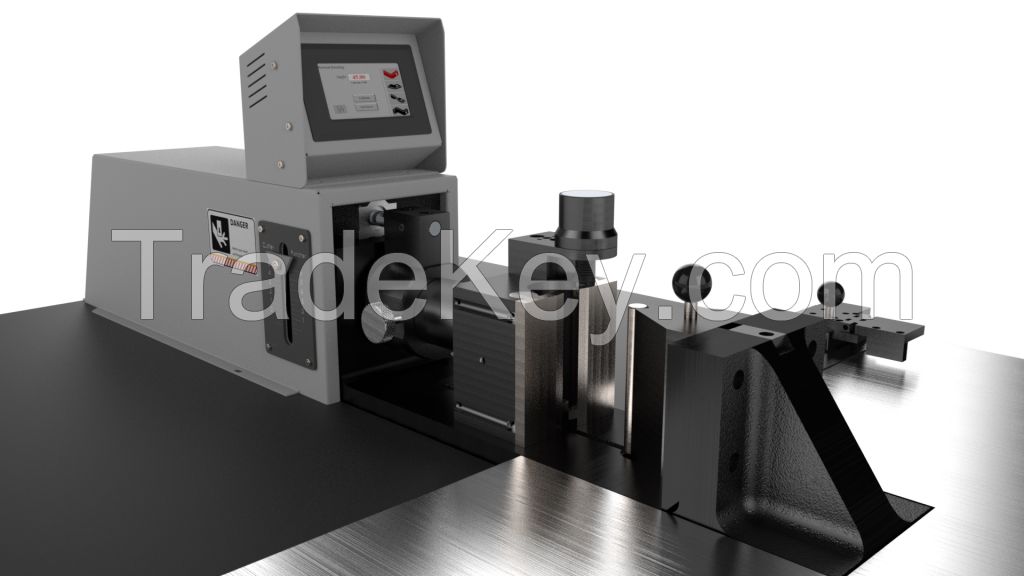





FOB Price
Get Latest Price700 ~ 3000 / ( Negotiable )
|1 Unit Minimum Order
Country:
Romania
Model No:
-
FOB Price:
700 ~ 3000 / ( Negotiable ) Get Latest Price
Place of Origin:
-
Price for Minimum Order:
700
Minimum Order Quantity:
1 Unit
Packaging Detail:
-
Delivery Time:
35 working days
Supplying Ability:
-
Payment Type:
Other, D/P
Product Group :
-
Others1
Contact Person Muhammad
Sanrong N, Taichung, Wuri Dist
*-Rotary measuring system:
A rotary encoder with a pulse factor of ***0 pulses per revolution
in couple is directly connected to the movable rotating plates of
the bender. Since these plates are attached to the back of the
busbar and rotates with it while bending process, the amount of
rotation is directly transferred to the encoder (5 Pulses each
degree), Then, the bender controller system is online to adjust the
bending amount and after reaching the desired bending angle, it
ends the process.
*-Linear measuring system:
A digital ruler consists of a magnetic strip and a digital receiver
attached to the end of the piston rod measures and controls the
advance rate of the piston in each bending process. This system
provides bend repeatability with an accuracy of 5 microns, which
can lead to same size and numerous bends. It is also possible for
the operator that instead of entering the angle from the beginning,
enter the stroke length on the device screen. It should also be
noted that the roller plate installed in the movable jaw section of
the bender rotates dynamically during bending along with the
busbar, which this design advantage prevents the bottom surface
from being stretched. The tire moves forward on other surfaces and
creates a line on the underside of the tire during
bending. Among
the other features of the bending section, it is possible to
install a rod with different radii on the fixed jaw of the bender,
which makes the bending arc more accurate in different
thicknesses.
*- Twist bending mold
In some cases, in order to create a connection between the busbar and the desired piece, we face the challenge of the busbar not being aligned with the installation location. And therefore, most of the consumers have to use several busbars to make this connection. The solutions proposed by Payapress company is to use Twist bending mold which makes it possible to rotate the direction of the *0 × *0 mm busbar up to *0 degrees, which in necessary cases it is very useful. It is possible to install this complex bend on the busbar machines of Payapress Company.
*- Edge bending mold
In some cases, for busbars with different widths and thicknesses, instead of using two busbars perpendicular to each other, we can use the possibility of bending up to *0 degrees on the coppers.
*- Z-Shape mold
As you know, in some uses of copper busbars, we are forced to make two bends at a very short distance. In many busbar bending machines, there is generally a *0mm limit for bending due to the use of tools called bending rollers in creating close bends. If in the electrical panel design process, we need to make a bend at a shorter distance we should use a mold with higher efficiency, this mold is called Z-shape mold.
| Country: | Romania |
| Model No: | - |
| FOB Price: | 700 ~ 3000 / ( Negotiable ) Get Latest Price |
| Place of Origin: | - |
| Price for Minimum Order: | 700 |
| Minimum Order Quantity: | 1 Unit |
| Packaging Detail: | - |
| Delivery Time: | 35 working days |
| Supplying Ability: | - |
| Payment Type: | Other, D/P |
| Product Group : | - |